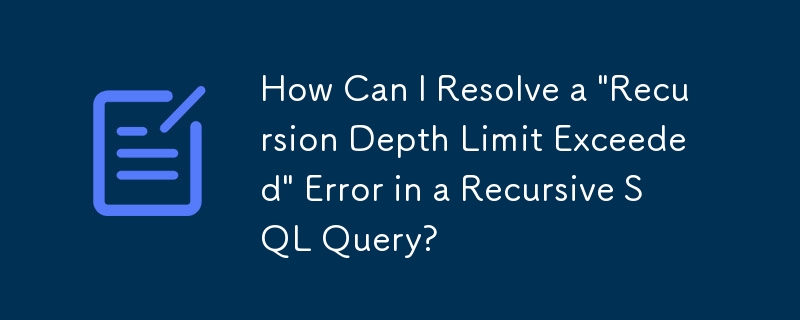Found a total of 10000 related content

Unified file management and conditional execution policies for PHP front-end API interface
Article Introduction:This article discusses how to efficiently manage a PHP file so that it can be used as an API interface for front-end AJAX requests and as an internal library function for back-end PHP scripts. The core solution is to use the conditional judgment mechanism to distinguish HTTP requests from internal references, thereby avoiding unnecessary code execution and ensuring the flexibility and correctness of the script. The article will provide specific code examples and discuss related best practices.
2025-08-05
comment 0
554

Axios Beginner's Guide: A Handy Promise-based HTTP Client
Article Introduction:Axios Key Points
Axios is a popular Promise-based HTTP client with an easy-to-use API that can be used in browsers and Node.js environments. It provides a versatile tool for JavaScript developers.
Axios differs from the built-in Fetch API in several ways, including its handling of HTTP error codes, its automatic inclusion of cookies in requests, and the ability to provide upload/download progress updates.
Axios allows developers to convert output or input data and add interceptors, functions that are triggered when a request is made or a response is received. These functions are for processing data and managing
2025-02-15
comment 0
636

How Debian OpenSSL prevents man-in-the-middle attacks
Article Introduction:In Debian systems, OpenSSL is an important library for encryption, decryption and certificate management. To prevent a man-in-the-middle attack (MITM), the following measures can be taken: Use HTTPS: Ensure that all network requests use the HTTPS protocol instead of HTTP. HTTPS uses TLS (Transport Layer Security Protocol) to encrypt communication data to ensure that the data is not stolen or tampered during transmission. Verify server certificate: Manually verify the server certificate on the client to ensure it is trustworthy. The server can be manually verified through the delegate method of URLSession
2025-04-13
comment 0
1096

Go HTTP server remote shutdown with message notification: From Hijack to elegant downtime
Article Introduction:This article explores the challenge of how to remotely shut down an HTTP server in Go and ensure that clients can receive downtime acknowledge messages. In response to the problem that directly using os.Exit may lead to message loss, the article details how to use http.Hijacker to force the sending of responses and discusses its limitations. At the same time, the article also looks forward to more elegant server downtime strategies, including managing on-the-go requests and leveraging the modern features of the Go standard library, aiming to provide a comprehensive solution guide.
2025-08-16
comment 0
663
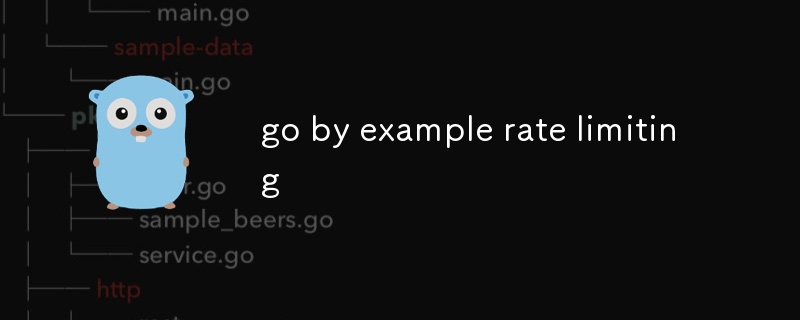
go by example rate limiting
Article Introduction:Use rate.Limiter to realize the basic current limiting based on the token bucket algorithm, and block the waiting token through the Wait() method to ensure that the number of requests processed per second does not exceed the set value; 2. Use the Allow() method to check whether the request is released without blocking, which is suitable for quickly rejecting over-limit requests and returning a 429 status code; 3. The current limiter can be integrated into HTTP middleware to achieve global current limiting, and the rate of all requests is unified; 4. Use map to combine sync.RWMutex to independently maintain the current limiter for each IP or user to achieve fine-grained current limiting; it is necessary to note that long-term unused current limiter instances should be cleaned regularly in the production environment to avoid memory leakage. Go's rate package is simple and efficient, and is easy to integrate into various services.
2025-07-29
comment 0
154

It's Time to Start Making Your Web Apps Reactive
Article Introduction:Core points
Responsive programming is crucial for web development: it ensures that applications are adaptable, able to handle different loads, respond to failures, and respond to users. This adaptability is achieved by embedding sound programming principles into the application from the very beginning.
Responsive applications run through a message-driven system: data is pushed, not pulled. This means that client recipients consume resources only when active, resulting in an efficient system that does not get stuck with requests for unavailable data. These applications are also designed to be flexible and can be scaled or reduced according to workloads, ensuring efficient use of resources and being able to handle peaks of user activity.
Responsive applications are resilient and responsive: They are designed to respond to applications in a timely manner
2025-02-15
comment 0
317

Describe the Use of `cURL` or `Guzzle` for HTTP Requests in PHP
Article Introduction:In PHP, cURL is suitable for projects that require underlying control and lightweight scenarios, and Guzzle is suitable for projects that pursue development efficiency and maintainability. 1.cURL is a built-in extension for PHP, suitable for scenarios where simple requests and no additional dependencies are required, but the code is cumbersome and error handling is complex; 2. Guzzle is a modern PHP library with good packaging, rich functions, and supports PSR standards, which is easy to integrate into large applications or frameworks; 3. The selection basis is project complexity: use cURL for simple scripts, and choose Guzzle when complex systems or advanced functions are required.
2025-07-11
comment 0
704
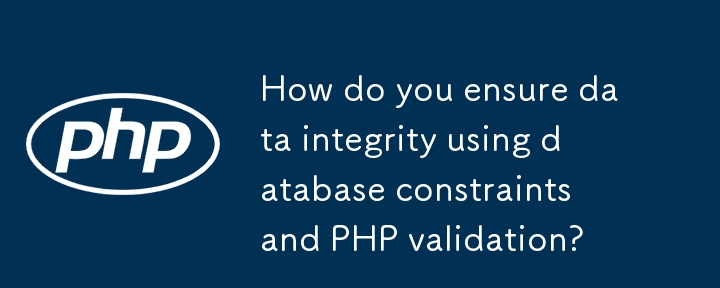
How do you ensure data integrity using database constraints and PHP validation?
Article Introduction:Use database constraints as the final security network to ensure the accuracy and consistency of data storage through primary keys, uniqueness constraints, foreign keys, non-empty constraints and inspection constraints; 2. Verify input as early as possible at the PHP layer, and use functions such as filter_var or verification libraries to filter, type check and rule verification of data to improve user experience and reduce invalid database requests; 3. Combining the two, it forms a defense in depth, PHP provides friendly feedback and pre-filtering, and the database forces to ensure data integrity. At the same time, database exceptions are captured and properly handled in PHP to ensure that even if there are problems such as race conditions, the system can still respond correctly, thereby fully ensuring data integrity.
2025-08-14
comment 0
870
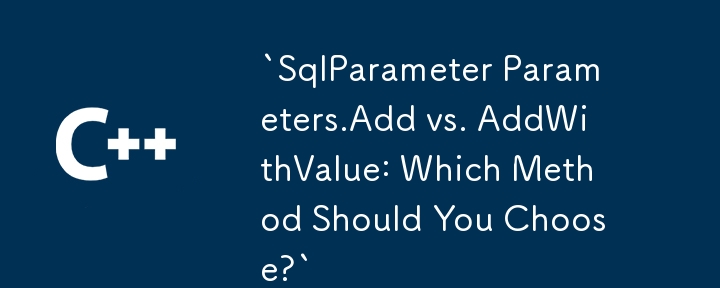

Dave The Diver: How To Catch Spider Crabs
Article Introduction:In Dave The Diver, there are some creatures that are not easy to catch. Or, catch alive that is. The spider crab is one of those very species, making it seem like the only way to bring these crustaceans back up to land is to viciously crack them up w
2025-01-10
comment 0
926

Prepare for Interview Like a Pro with Interview Questions CLI
Article Introduction:Prepare for Interview Like a Pro with Interview Questions CLI
What is the Interview Questions CLI?
The Interview Questions CLI is a command-line tool designed for JavaScript learners and developers who want to enhance their interview
2025-01-10
comment 0
1546
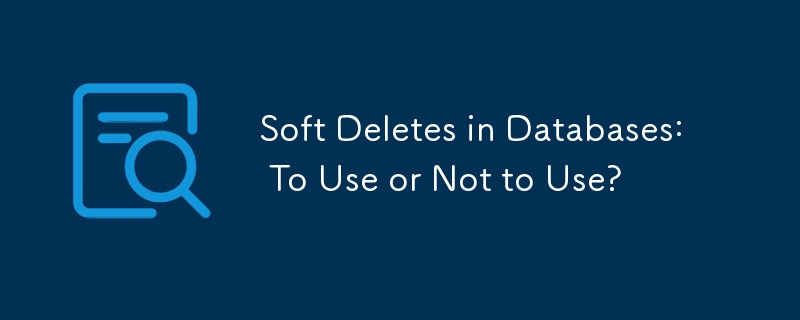
Soft Deletes in Databases: To Use or Not to Use?
Article Introduction:Soft Deletes: A Question of DesignThe topic of soft deletes, a mechanism that "flags" records as deleted instead of physically removing them, has...
2025-01-10
comment 0
1122














